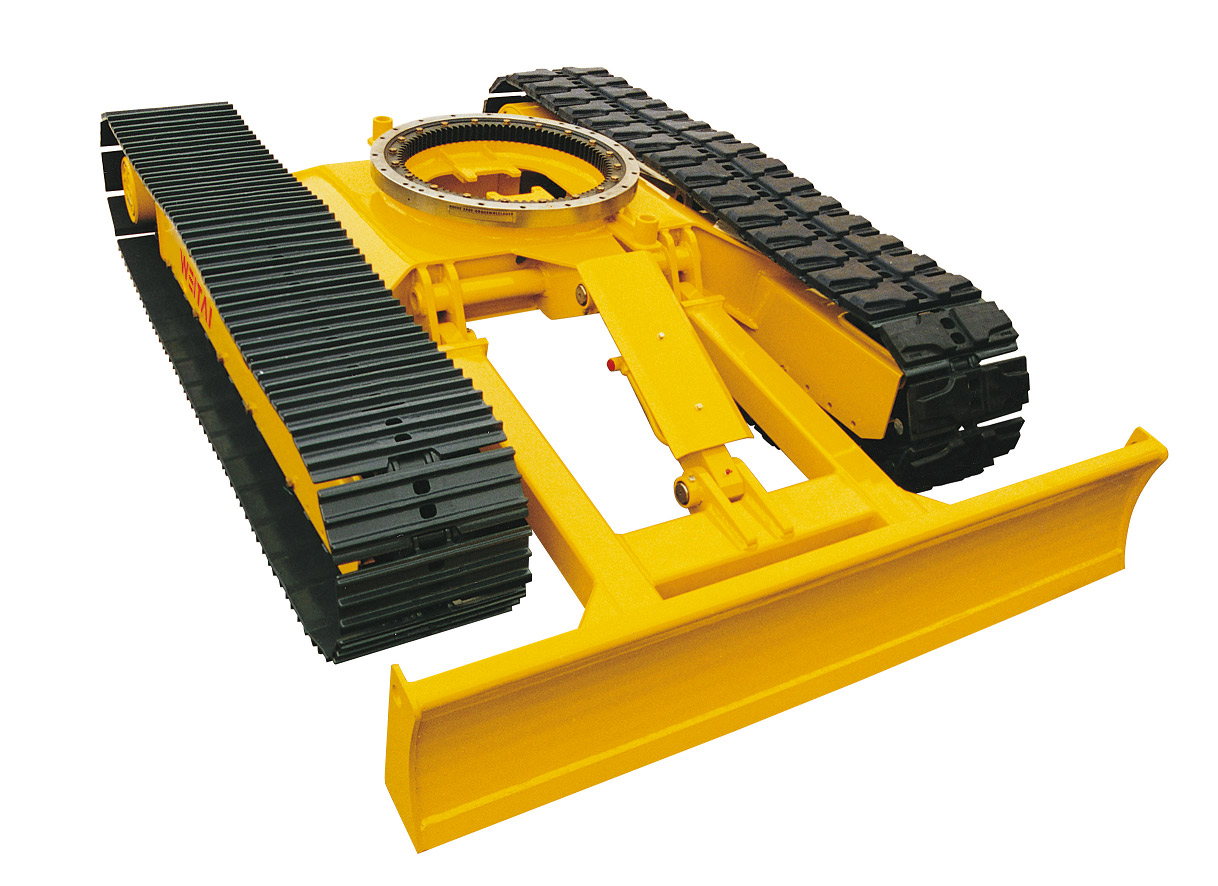9 TIPS FOR UNDERCARRIAGE MAINTENANCE
1. User manuals
Owner’s manuals and dimension tables are available for most excavator makes and models. These allow you to determine the rate of wear on various components. If you need any help accessing this information, contact your chassis supplier for assistance.
2. Pre-use inspections
It’s important to inspect the undercarriage before every use. Look for signs of wear and damage, such as tears in the rubber tracks or misalignment in the drive sprocket. Pay particular attention to areas that may have been damaged by debris or other objects on the worksite.
3. Focus on track tension
Having the correct track tension is critical to the longevity of the chassis system. The track tension needs to be the perfect balance between not too tight and not too loose. The right track tension is a fine line between too tight and too soft.
If your tracks are too tight, they will put an unnecessary drag on your chassis components, the loose track can wear out your chassis. Depending on the terrain, track tension may need to be adjusted. Every moving and stationary part of the chassis will be under stress. This will lead to early wear and expensive repairs.
If your tracks are too loose, they will also put stress on your chassis, too much lateral movement (or “snaking”) will occur, again leading to wear and derailment Loose tracks will wander and misalign, putting side stress on your system.
4. Use the narrowest shoe possible
Wider shoes can cause problems maneuvering by sticking out farther and making it more difficult to turn. Wider shoes may be necessary, however, to lower ground pressure and keep the machine from sinking in extremely wet conditions.
5. Keep the landing gear clean of dirt and debris.
Cleaning landing gear components properly can take a lot of effort, but it’s something worth your time. What kind of cleaning is necessary depends on what kind of application you put your tracked equipment in, what kind of terrain you work in, and what kind of ground conditions your tracks are moving in. Deposits on landing gear components are a byproduct of this work. Cleaning the landing gear is an ongoing activity. It is best done and concluded at the end of each shift.
Over time, dirty landing gear can cause many problems. Piles of debris can snag your moving parts and can cause parts to break under protest. Gravel can also cause wear and premature wear. Fuel efficiency also decreases as tracks clog and landing gear parts seize up. Translated with www.DeepL.com/Translator (free version)
6. Minimize high operating speeds
Higher speeds cause more wear on the undercarriage. Use the slowest possible operating speed for the job.
7. Inspect your equipment visually every day for signs of wear
Check for cracks, bends, and breaks on components. Look for wear on bushings, sprockets, and rollers. If you see any components that are shiny, there’s probably an alignment problem. Make sure nuts and bolts are not loose, which can cause abnormal wear by interfering with the proper movement of parts.
8. Keep a inspections
- Stand back and look around and find anything that looks out of place.
- Walk around the device before looking at the individual parts.
- Look for oil spills or any unnatural moisture that might drip down.
- Look further for leaking seals or damaged grease fittings.
- Check sprocket for tooth wear and bolt loss.
- Check your idler wheels, guides, rollers, and links for loose or missing parts.
- Watch your chassis frame for signs of stress cracking.
- Check the landing gear rail for indentation wear.
9. Routine maintenance
All undercarriage components naturally wear out over time, and they have limited service expectancy. Undercarriage wear doesn’t have a specific time limit. Although you measure service life in operating hours, there is no set rate for how long your equipment’s undercarriage will last. Component lifespan greatly depends on a variety of factors you’ll experience on your job sites.
Post time: Mar-20-2023

